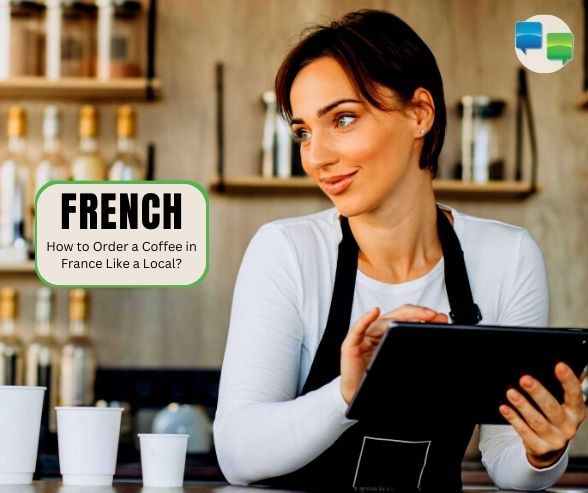For you, it may seem like an easy task: ordering a coffee. But as with several things in France, there is a certain right and a wrong way.
French coffee culture is guided by a series of spoken and unspoken rules. There is somewhat confusing nomenclature, out-of-the-box coffee shop dynamics, and a strong tendency toward over-caffeination.
As a tourist to France, however, ordering a coffee like you know what you are doing is one of the finest ways to score your brownie points with cantankerous waiters, support you fit in and, of surely, keep you awake while you travel. Here are some tips on how to order coffee in French to get you started.

What to order in a Paris café
First of all, you would want to make sure you are getting the right drink. Watch out since the French language might try to trip you up along the aisle.
In France, if you order a café, you may expect a small espresso. If you are looking for a larger mug of coffee, that is cafe filtre—and as it is majorly popular with the tourist crowd, you would not find it in many places outside of Starbucks!
A noisette, which means hazelnut, is also somehow a misnomer. It is not a hazelnut-flavoured brew, but actually, a hazelnut-coloured one. In simple words, a noisette is a cortado—mainly espresso with simply a splash of milk.
For an americano (espresso along with water added), think again prior to calling it an américain. Generally, this kind of espresso is called a café allongé.
You thought café crème means coffee with cream? Try again, A café crème, mostly shortened to simply crème, is an espresso with milk—or what several would typically refer to as a café au lait. As the Youtuber Comme une Francaise explains in his video, the French do not refer to a coffee with milk as a café au lait, saving that term for a coffee along with milk consumed at home.
Confusing, isn’t it? The takeaway is this: if you simply want a coffee with milk, order a café crème to sound like a local.
If you would like to enjoy your café au lait along with a pastry at your neighbourhood coffee shop, be certain to use the correct term: café crème.
For the finest deal, go to the Comptoir.
This is not globally the case, but in several typical French cafes, your shot of espresso would be significantly cheaper if you order it at the bar or comptoir. Doing it will also give you a chance to talk to the waiter and hang with the regulars. Get your morning copy of Le Monde and give it a try.
How “serré” do you want your coffee?
French coffee is quite strong to start with—although several Italians will tell you otherwise. But if you want your espresso to be particularly small and strong, ask for it to be serré (tight), or even bien serré (very tight). This language refers to how tightly the barista twists the lever used on the machine when he or she prepares your coffee. If you wish for a less strong coffee, you may ask for pas trop serré (not too tight).
A “tight” espresso is the perfect manner to start your day in Paris.

Do not ask for a takeaway coffee in Paris
Part of the joy of having coffee in France is the experience of sitting inside a cafe to enjoy it. It is quite rare to see a French person ask for a coffee to-go or an importer. It means that if you are in a hurry, your options are limited.
For the maximum part, French cafes do not carry to-go cups, but you will observe that in several places—the metro, administrative buildings, schools, and so on—you could get a coffee out of a machine (usually, a coffee vending machine). These coffees are not top quality, but they help in a bind. Increasingly, some coffee chains also carry coffee for the road, but, again, takeaway culture is simply not the norm in France.
Another point against to-go coffee: Parisian café culture is an experience not to be missed.

Learn French (Hello-Hello)
Learn French (Hello-Hello) is a full-fledged language course with 30 LESSONS developed in collaboration with the American Council on the Teaching of Foreign Languages (ACTFL), so you can be assured that these lessons follow an effective research-based methodology. All lessons are conversational based on realistic dialogues and situations, rather than a collection of out-of-context words and phrases. iTunes store link of Learn French (Hello-Hello)

